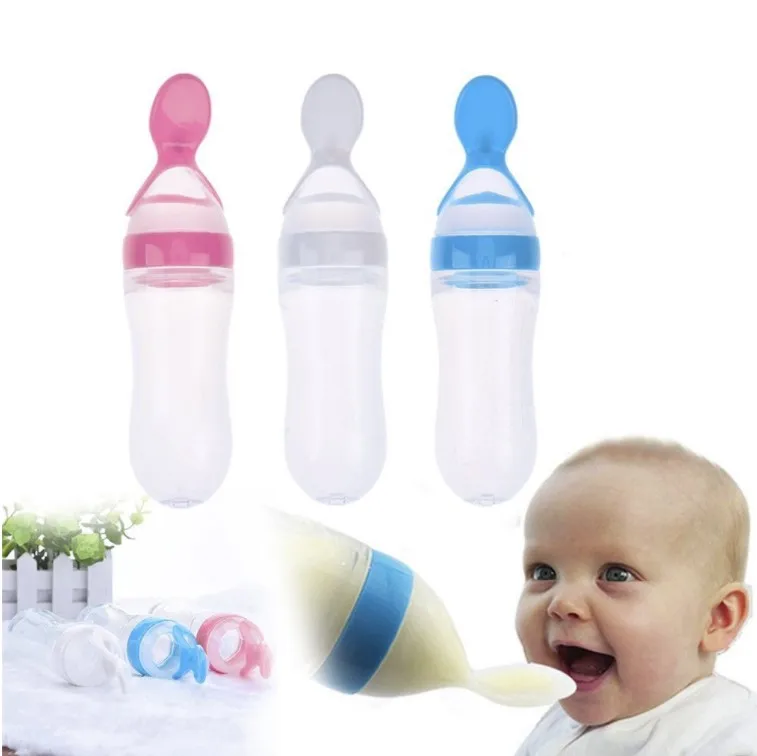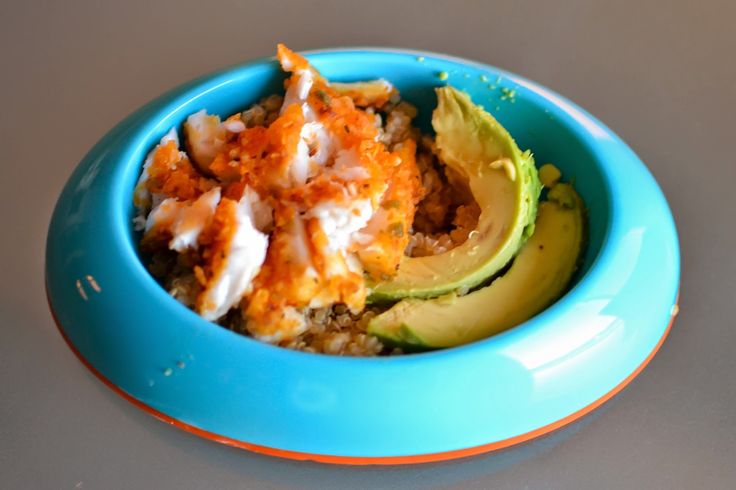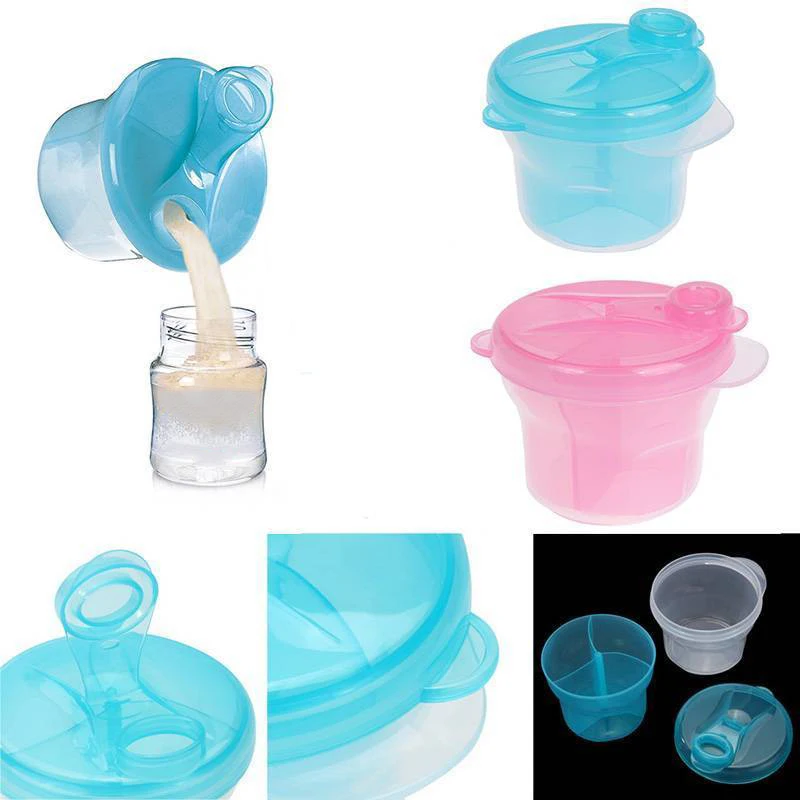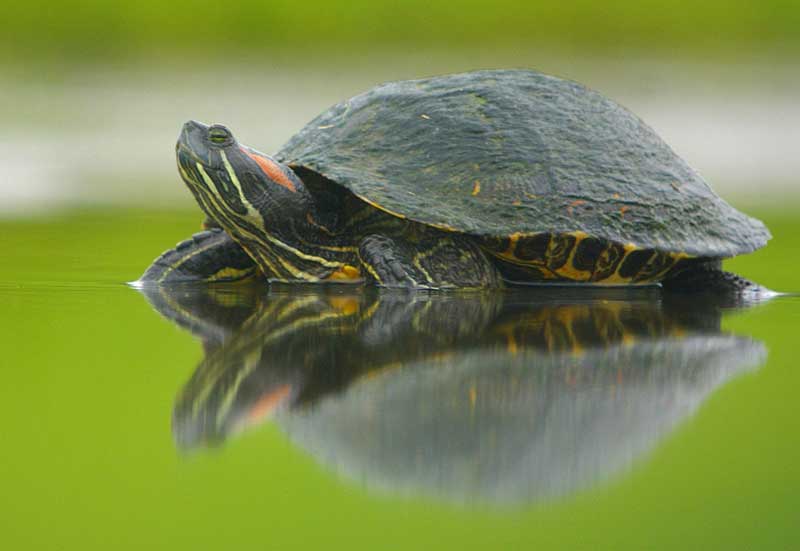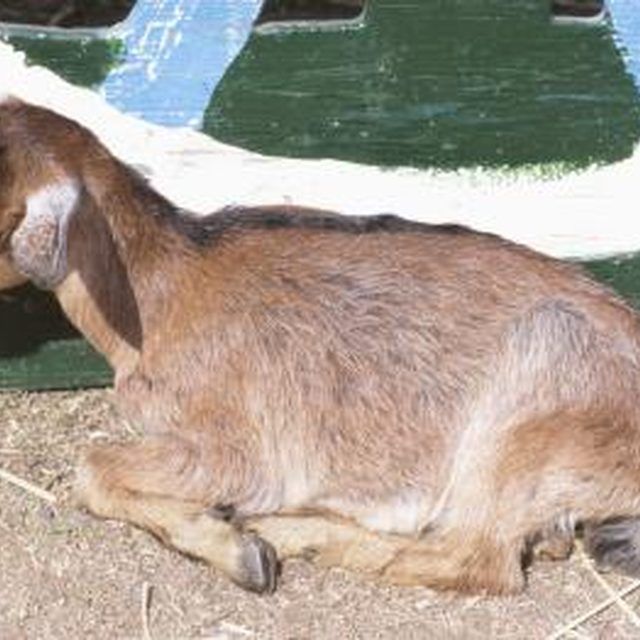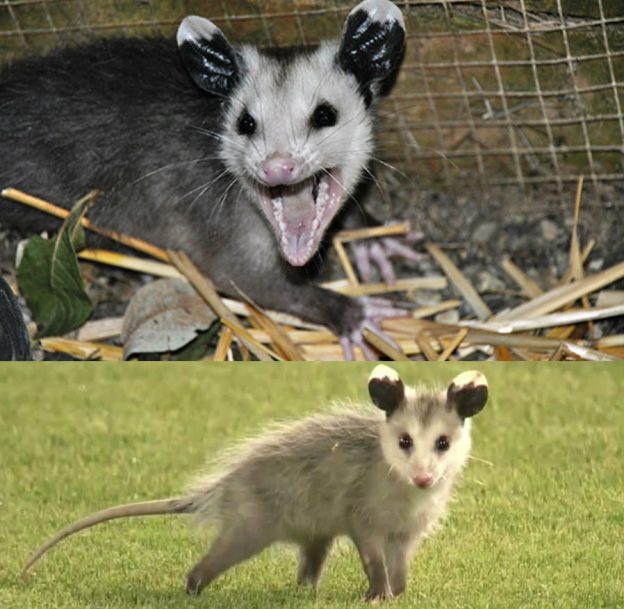How to prepare pears for baby food
Pear Puree for Baby (Pear Baby Food)
Published: · Modified: by Laura · This post may contain affiliate links.
Jump to RecipeThis homemade pear puree is an easy baby food recipe that's made with only two ingredients- pears and water! Making homemade pear baby food costs so much less than store-bought jars! It's easy to make it organic too, by using organic pears!
Pears are one of the first fruits I introduce to my babies, and they all go crazy for them. They are sweet, and full of fiber to help keep things moving in the digestive tract (if you know what I mean), plus it's so easy to make baby pear baby food at home!
I always have made my baby food from scratch, from sweet potatoes, to baby food carrots, to combinations like pumpkin apple baby food, I always prefer homemade over store bought! Not only does making your own baby food save SO much money, but it's also easy to make it organic with minimal ingredients!
This homemade pear puree is an easy baby food recipe that is great for little ones of all ages. It's made with only two ingredients- pears and water - with the option of adding some cinnamon once you're certain your baby isn't allergic to pears!
There are two ways to make baby food pears. For younger babies with sensitive tummies, I recommend cooking the pears first. For older babies who still love their purees, you can simply blend fresh pears with water, no cooking required! I will show you how to make baby food pears that are cooked!
Cut and Cook the pearsBegin by cutting each pair into about six pieces. Then place the pears into the container of a slow cooker.
Add waterWhen using 8 small pears (which measured to be about 6 cups), add ½ cup of water.
CookNext, cook the pears (if desired). I have used two methods to cook pears to make pear puree:
- Slow cooker - Cook the pears on high for 1-2 hours, or until the they are soft.
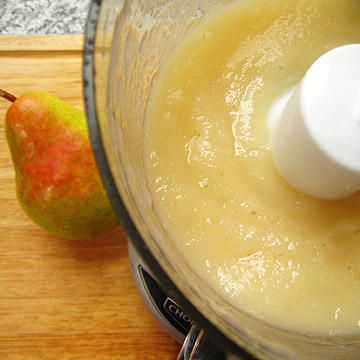 Notice they will change color as they cook! I love this method because I just toss them in the slow cooker and walk away. No need to watch them as they steam!
Notice they will change color as they cook! I love this method because I just toss them in the slow cooker and walk away. No need to watch them as they steam! - Steam on the stovetop - If you'd prefer, simply put the pears in a pot with the water, or in a steaming basket, and steam the pears on the stovetop for about 10-20 minutes, until they are soft.
Place the contents of slow cooker (water and cooked pears) into a Vitamix Blender (or anther high-powered blender). Blend for 30-60 seconds until smooth.
Store or serve to babyTransfer the pear puree to ice cube trays to freeze, or individual containers to store in the refrigerator. I love these silicone ice cube trays. I found them after I had baby #4 and I couldn't believe I went so long using floppy, difficult trays! These silicone ice cube trays have a firm outer rim, making them easy to transport, and a lid for storage! The wells hold a good amount of puree too!
To reheat frozen pear puree:Reheat one or two cubes of pear puree in a glass container in microwave for 40-60 seconds.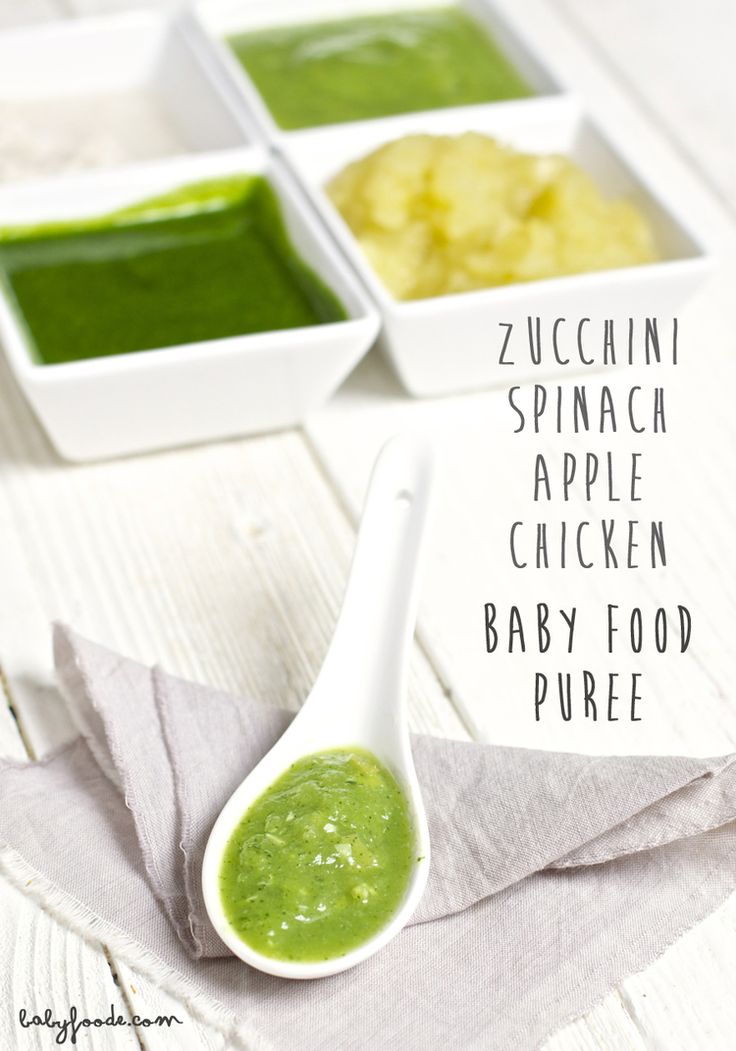 You could also warm it on the stovetop or let it thaw at room temperature for several hours!
You could also warm it on the stovetop or let it thaw at room temperature for several hours!
Here are some frequently asked questions about pear baby food!
Do you have to cook pears for baby food?
The answer to this question depends on the age of your baby and softness of the pears. I prefer to cook pears to make pear puree until my baby is 8-10 months old because it makes them easier on their tiny little tummies. If you buy soft, juicy pears, you can blend them without cooking them!
Can I give raw pear to my baby?
Once your baby is 8-10 months old, you can feed him or her raw, peeled pears. I recommend peeling to reduce the risk of gagging and choking. Also, be sure to stay very near your baby when you feed her finger foods, to prevent choking. Before 8 months, I recommend cooking the pears before feeding them to your baby for easier chewing and digestion.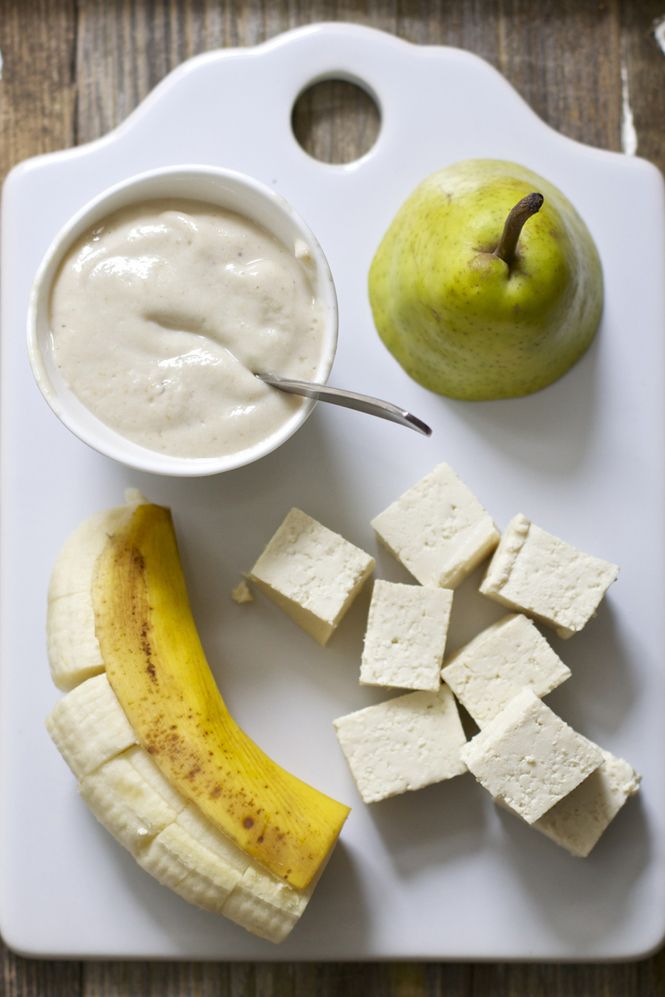
What age can my baby eat pears?
You can feed cooked and pureed pears to your baby at 6 months old!
Are pears constipating for babies?
No! Quite the contrary! I find the fibrous nature of pears keeps the systems flowing (if you know what I mean)!
What kind of pears are good for baby food?
I recommend using organic pears, especially if you will be cooking and pureeing them with the skins on. My babies have loved all pears, but I try to stick to soft, sweet varieties like Anjou, Bartlett, Bosc, and Comice!
If you make and love our recipes, it would mean so much to me if you would leave a comment and rating! And don't forget to follow along with us on Instagram, Pinterest, Facebook, and Youtube - be sure to tag @joyfoodsunshine and use the hashtag #joyfoodsunshine so we can your creations!
Pear Puree for Baby (Pear Baby Food)
Laura
This homemade pear puree is an easy baby food recipe that's made with only two ingredients- pears and water! Making homemade pear baby food costs so much less than store-bought jars! It's so easy to make it organic too, by using organic pears!
5 from 1 vote
Prep Time 10 mins
Cook Time 2 hrs
Total Time 2 hrs 10 mins
Course baby food
Cuisine American
Servings 19 Servings (2 TBS per serving)
Calories 43 kcal
- ▢
Vitamix blender
- ▢
silicone ice cube tray
- ▢ 8 small pears about 6 cups
- ▢ ½ cup water
Cut pears into slices.

Add pear slices and water to the container of a slow cooker.
Cook in slow cooker on high for 2 hours.
Place the contents of slow cooker into a Vitamix Blender (or anther high-powered blender).
Blend for 30-60 seconds until smooth.
Transfer to ice cube trays to freeze, or individual containers to store in the refrigerator.
I recommend using organic pears, especially if you will be cooking and pureeing them with the skins on. Stick to soft, sweet varieties like Anjou, Bartlett, Bosc, and Comice!
How to steam pears on the stovetopIf you'd prefer to not use a crockpot, simply put the pears in a pot with the water, or in a steaming basket, and steam the pears on the stovetop for about 10-20 minutes, until they are soft.
How to store pear puree Transfer the pear puree to ice cube trays to freeze, or individual, airtight containers to store in the refrigerator.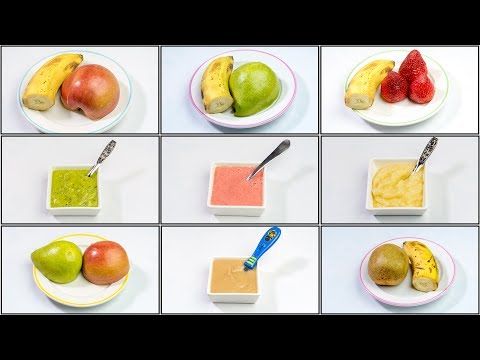
Reheat one or two cubes of pear puree in a glass container in microwave for 40-60 seconds. You could also warm it on the stovetop or let it thaw at room temperature for several hours!
Serving: 2TBSCalories: 43kcalCarbohydrates: 11gProtein: 1gFat: 1gSaturated Fat: 1gSodium: 1mgPotassium: 87mgFiber: 2gSugar: 7gVitamin A: 19IUVitamin C: 3mgCalcium: 7mgIron: 1mg
Tried this recipe?Let us know how it was!
This post contains affiliate links, which means that if you purchase a product through a link you clicked on here, I receive a portion of the sale. Thank you for supporting JoyFoodSunshine!
Did you make this recipe?
Leave a comment and review below, then take a picture and tag @joyfoodsunshine #joyfoodsunshine on Instagram so I can see it! Sign up here to receive weekly e-mails!
Reader Interactions
Pear Baby Puree (4+ Months - Stage One)
This Pear Baby Puree is so creamy and delicious that you will want to eat it as well! A healthy and homemade puree filled with wholesome pears, this recipe is a wonderful first puree for your baby. It’s a great Stage One Baby Food for 4-6+ month olds.
It’s a great Stage One Baby Food for 4-6+ month olds.
Medically reviewed and co-written by Jamie Johnson, Registered Dietitian Nutritionist (RDN), and Lauren Braaten, Pediatric Occupational Therapist (OT).
Pear Baby Food PureeLevel up the yumminess of your baby’s purees with pears! 👊
This is a simple recipe filled with simmered pears paired with a pinch of warming spices. It delivers an irresistible, delicious combo that easily hits the one-for-one status — one bite for your baby 👶, one bite for you 👩!
Is it your first time making homemade baby food? Then I suggest you start this journey by reading my in-depth Guide on how to Make Homemade Baby Food. The detailed guide goes over all the important information such as the best cooking tools to have on hand, safe storage, how to know when baby is ready for solids, how to introduce purees, the best first foods for baby, and more! You can also check out my best-selling cookbook for even more information and recipes!
Pear Baby Food Video
Watch this video to see how easy this Pear Puree is to make!
Reasons to Love this Pear Baby Puree- great baby food for 4-6+ months
- 1-ingredient recipe
- super smooth and creamy
- delicious
- great for digestion
- simple and easy to make — less than 20 minutes
- freezer-friendly
- budget-friendly
- homemade
- healthy
- organic – you can use organic pears in this recipe
- Good source of immune-boosting vitamin C
- Great source of fiber that helps with digestion and improves constipation
- Protects your baby’s heart by providing antioxidants, vitamins, and fiber
- Provides vitamin K to help strengthen bones
Make sure to read the recipe card below for full ingredients and instructions!
- Pears: Pears are inexpensive fruits that you can easily find at almost any grocery store year-round.
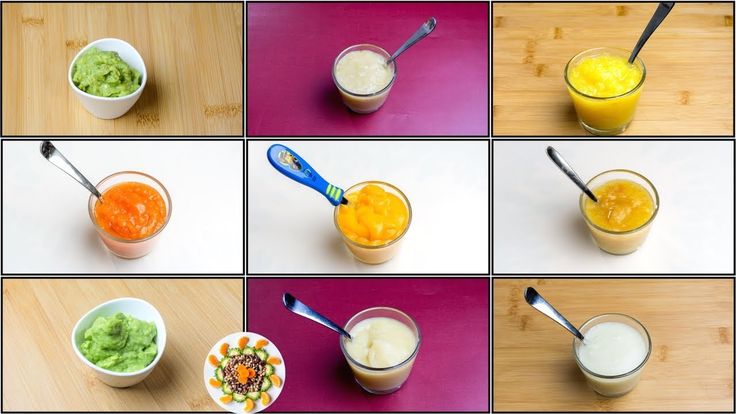 You can use any pear variety you prefer for this recipe. Since organic pears are just a fraction more than conventional ones, I recommend going with an organic variety as they have more polyphenols and antioxidants, but that is completely up to you.
You can use any pear variety you prefer for this recipe. Since organic pears are just a fraction more than conventional ones, I recommend going with an organic variety as they have more polyphenols and antioxidants, but that is completely up to you. - Warming Spice: We are kicking up the flavor profile of the pears by pairing them with a warming spice such as cinnamon, nutmeg, cloves, or cardamom. To be clear, you don’t add them all; just pick one and add a pinch. Trust me, they all taste amazing with pears, and I will not be surprised at all if I find you in your kitchen eating a bowl of this puree. 😉 But you can always skip adding the spices to your baby food if you prefer (see more below).
Type of Pears to Use: While my favorite pear to use for this recipe is Bartlett pear, you can use any type of pear you prefer — whether it’s Bosc Pear, Taylor’s Gold Pear, Anjou Pear, Asian Pear, or Comice.
Step-by-Step Instructions- Prep: Peel and roughly chop the pears.

- Mix: Place the pear chunks, spices (if preferred), and water into a medium saucepan.
- Cook: Cover and heat for 10-15 minutes or until tender.
- Blend: Let it cool slightly and then transfer to a blender and puree until smooth.
- Eat: Serve or freeze for another meal.
While I love the crisp and slightly sweet flavor of simmered pears, there are several ways you can cook pears for baby food.
SteamingPeel and roughly chop 6 pears. Place the cubes into a steamer basket over 2 inches of boiling water for 8-10 minutes or until tender when pricked with a fork. Puree in a blender as directed below.
RoastedCut 6 pears in half. Place them into a medium roasting tray with the cut side down. Add enough water to cover the very bottom of the tray. Cook at 400 degrees F for 30-40 minutes or until tender when pricked with a fork. Puree in a blender as directed below.
Puree in a blender as directed below.
Frequently Asked Questions
When can baby eat pears?
Babies can have pears as one of their first foods. When a baby can start on solids is determined by their own rate of development, which generally comes between 4-6 months of age. Some of the developmental milestones babies need to reach in order to start solids include: if your baby has solid control of their head and neck, if your baby has doubled in weight, and if your baby is reaching for or opening their mouth when you eat (see my guide here). Before you start your baby on purees, you should consult with your pediatrician to make sure your child is developmentally ready.
Can pears be baby’s first food?
Pears can 100% be your baby’s first food if you want it to be. It is recommended to wait to introduce the top eight allergen foods to your baby once a few other well-tolerated foods have been introduced, but otherwise, foods can be introduced in any order so choose whatever you are most excited for your baby to have.
Are pears a common allergen for baby?
No, pears are not a common allergen, however, as with any food, start with a small portion and be aware of any signs that might be an allergic reaction after introducing it.
Do pears cause constipation for babies?
Pears are not known to cause constipation in babies, but are actually one of the “P” fruits known to help alleviate constipation.
Tools NeededThese tools will make it a lot easier for you to make this healthy Green Bean Puree. For more of my favorite kitchen tools make sure to check out my shop.
- Steamer insert with lid
- Blender or Food Processor
- Freezer Tray
- Storage Containers for Fridge
- Stasher Bag
- Bib with catch pocket
- Reusable pouches
While the most popular option is adding cinnamon to pear baby food, you can also add in cloves, nutmeg, cardamom, fresh mint, fresh basil, freshly grated ginger, or even allspice (see quantity recommendations in the recipe card).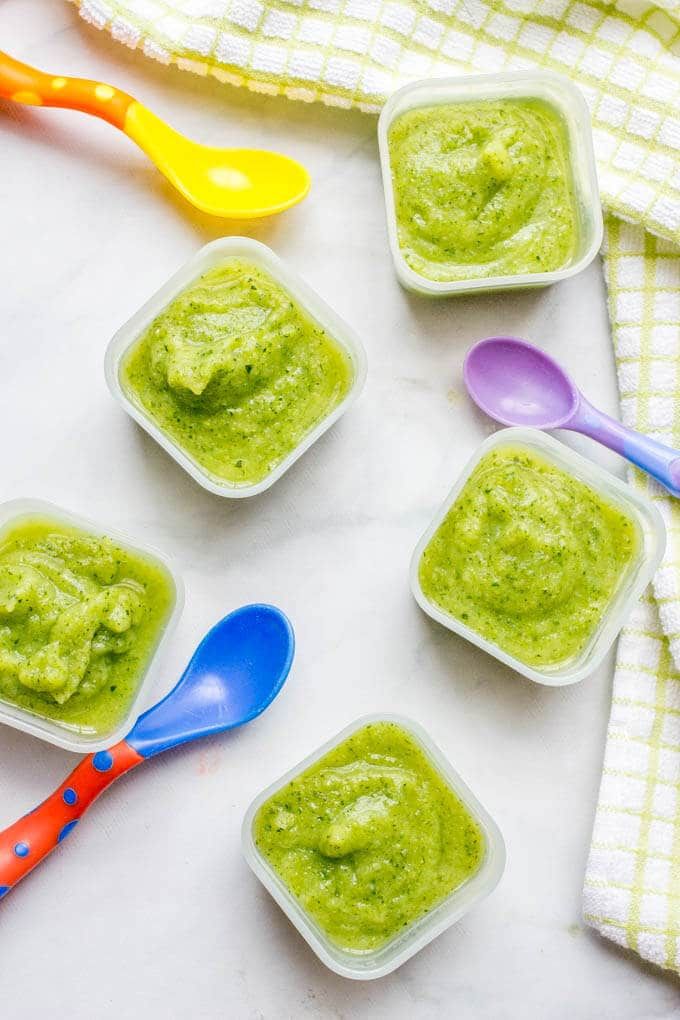
Tip on Spices: I always add spices or herbs to my baby food purees, but you can choose to leave them out in all of your baby food. You do you! Either way, this puree will surely taste amazing.
How to Store Pear PureeRefridgeratorYou can store this puree in an airtight container in the fridge for 3-4 days.
FreezerThis puree can be frozen for up to 4 months.
- Spoon puree into a freezer storage container. Do not overfill.
- Place the lid on the storage container or cover it with a piece of saran wrap, and label it with the date and recipe name.
- Place the tray into the freezer and let it freeze completely — preferably overnight.
- Pop-out the baby food cubes and place them in a ziplock baggie or stasher bag. Don’t forget to relabel the baggie or stager bag for future reference.
Need more information on how to store your baby foods? Head over to my Best Baby Food Storage Containers – Plus 6 Tips on Freezing and Thawing post!
Label Tip: Don’t forget to label your purees before you place them in the fridge or freezer with the name of the puree and the date you made it.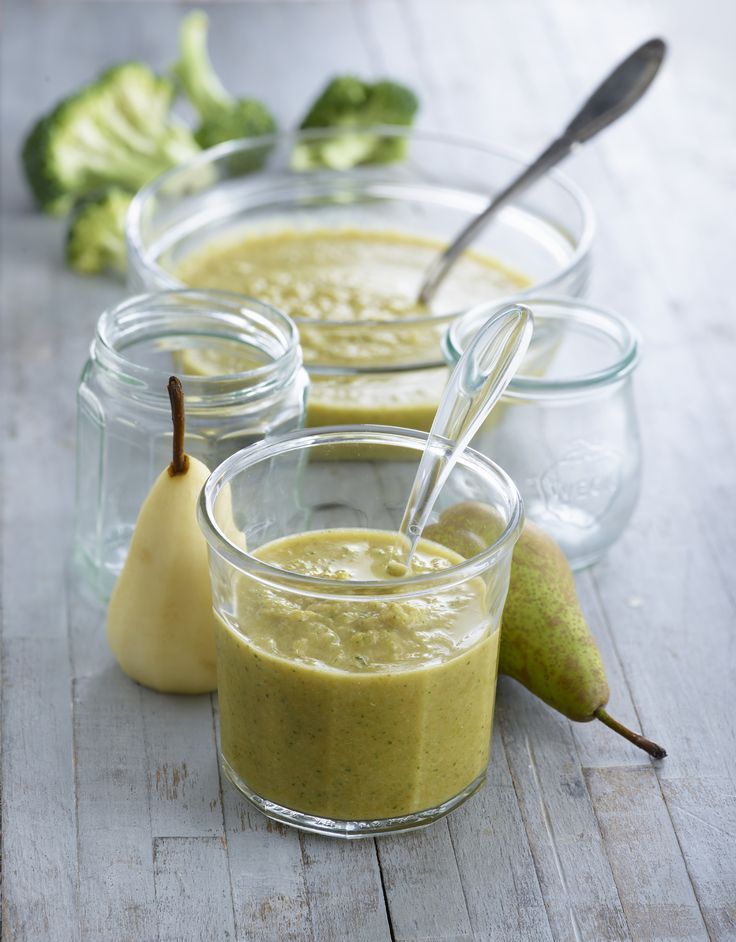 Take it from me; by the end of the week, you will completely forget what is in your freezer and how long it’s been there… because you know… mommy brain. 😉
Take it from me; by the end of the week, you will completely forget what is in your freezer and how long it’s been there… because you know… mommy brain. 😉
While this pear puree is flavorsome and great by itself, it’s also super easy to mix and match with other nutrient-dense baby food purees. So give these fun Stage 2 flavor combos a try!
- Apples
- Apricots
- Blueberry
- Bananas
- Quinoa Baby Cereal
- Prunes
- Kiwi
- Sweet Potato
- Soft Tofu
- Oats
- Pumpkin
- Mango
- Strawberry
- Yogurt
PUREE FEEDING TIPS
- Try adding a little seasoning or spice to purees – babies like flavor! Or consider changing the temperature of purees from time to time, to slightly warmed or slightly chilled. Varying these aspects adds to the sensory experience!
- Place a small amount of puree on the tray during spoon-feeding, so that your baby can dip their fingers or hands in the puree.
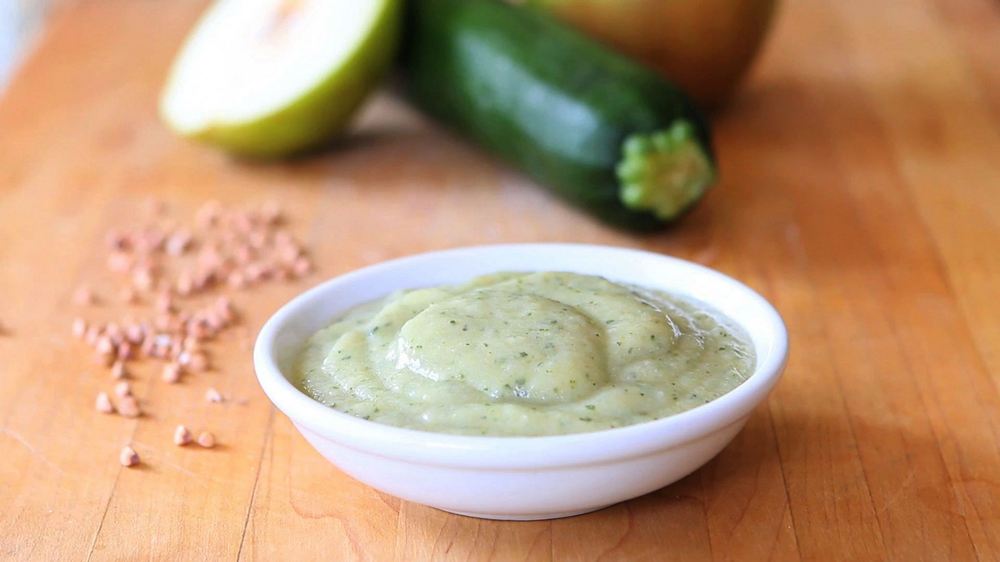 Allowing your baby to explore foods in this way helps them learn to self-feed and can help them be more willing to try new textures and foods in the future.
Allowing your baby to explore foods in this way helps them learn to self-feed and can help them be more willing to try new textures and foods in the future. - Purees are great to keep in your baby’s regular rotation of foods – but if you start feeding with traditional weaning using purees, make sure to progress beyond eating ONLY purees. Once your baby can safely and comfortably swallow purees (usually by 7 or 8 months) it’s time to introduce other textures, such as teething biscuits and soft-cooked finger foods. Moving onto additional textures in a timely manner may help prevent feeding difficulties at a later age.
Or watch a shortened version of this video here.
- 6 pears
- 1/8 tsp cardamom or other spice (see notes)
- 1/4 cup water
Prep: peel and roughly chop the pears.
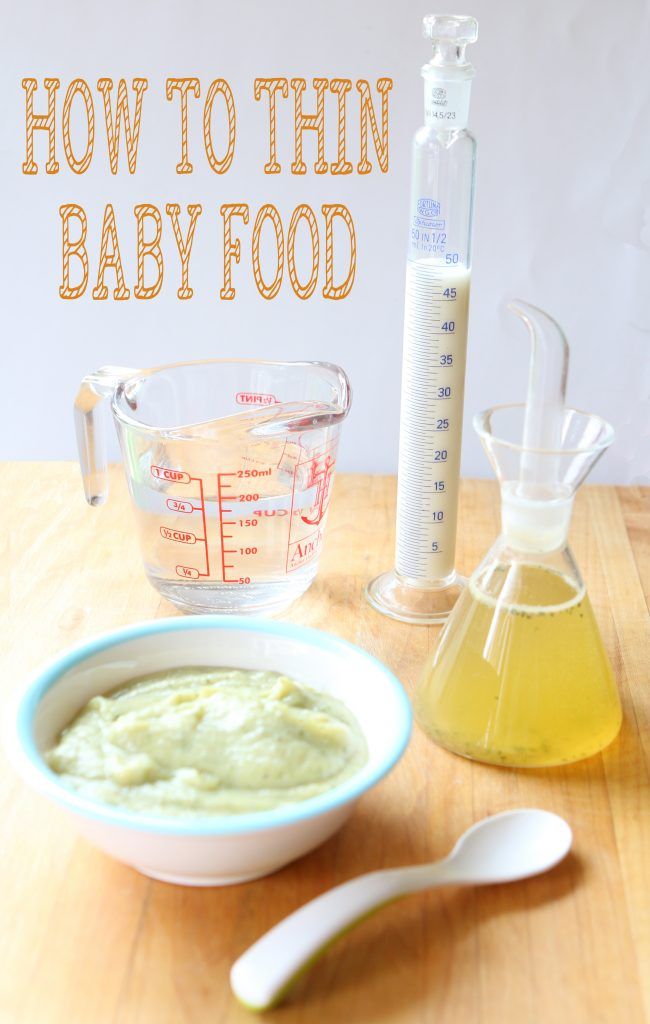
Combine: place the pear chunks, spices (if using) and water into a medium saucepan, cover.
Cook: heat on medium-low heat for 10-15 minutes or until tender when pricked with a fork
Transfer: let cool slightly. Using a slotted spoon, scoop the pears out of the saucepan, leaving the excess water behind, and place in a blender or food processor.
Blend: turn on the machine and blend for 1-2 minutes until you have your desired consistency. If your pear puree is too thick, add the leftover cooking water in 1/4 cup increments.
Eat: serve to baby or freeze for another meal.
Age: 4-6 months and up
Yield: roughly 20 ounces
Additional Spices: You can also use 1/4 tsp cinnamon, 1/8 tsp nutmeg, 1/8 tsp cloves, 1/8 tsp cardamom, 1/8 tsp allspice, 1/4 teaspoon freshly minced ginger, or a pinch of freshly chopped basil or mint.
Note on Pears: while my favorite pear to use for this recipe are Bartlett pears, you can use any type of pear you prefer – Bosc Pear, Taylor’s Gold Pear, Anjous Pear, Asian Pear or Comice.
Storage: Fridge – store in an airtight container in the fridge for up to 4 days. Freezer – can be frozen for up to 4 months.
Blender
Tripp Trapp High Chair
Freezer Tray
Silicone Baby Bibs
Did you make this recipe?
Tag @babyfoode on Instagram and hashtag it #babyfoode!
Pin Recipe Email a Friend
NEW TO MAKING PUREES? THEN CHECK OF MY GUIDE ON WHICH KITCHEN TOOLS YOU ACTUALLY ARE GOING TO NEED TO MAKE THE CREAMIEST AND SMOOTHEST BABY PUREES. HINT, IT’S NOT MANY!Pears in baby food - Encyclopedia Baby food
Viktoria Levchuk© Very often, the first fruit food is a green apple, but the next fruit is traditionally a pear. Pears in baby food pair well with apples, as they are smooth in texture, easy to digest, and rarely cause allergies. They are rich in fiber and vitamin C, and are great for relieving constipation. Pears in baby food are a versatile fruit that can be combined with many other ingredients to make a delicious baby puree.
Pears in baby food pair well with apples, as they are smooth in texture, easy to digest, and rarely cause allergies. They are rich in fiber and vitamin C, and are great for relieving constipation. Pears in baby food are a versatile fruit that can be combined with many other ingredients to make a delicious baby puree.
What are pears?
Contents:
Pears are soft sweet fruits with a fibrous center. They are rich in antioxidants, flavonoids and fiber. This autumn fruit is ideal for baby food.
There are about 4000 registered varieties of pears, most of them strictly ornamental, leaving only 30 or more species that are edible. This fruit is from the Rosacea family, which includes many other fruits (some quite unlike pears) such as cherries, raspberries and even almonds. Edible pears come in two main varieties: Asian and European. The Asian varieties are usually firm and juicy, while the European type is usually soft and juicy when ripe. Pears come in a variety of colors including many different shades of green, red, yellow/gold and brown. Many cultivars do not change color as they mature, making it difficult to determine ripeness.
Pears come in a variety of colors including many different shades of green, red, yellow/gold and brown. Many cultivars do not change color as they mature, making it difficult to determine ripeness.
History of pears
The birthplace of the pear has not been precisely established. Someone believes that it grew between the Black and Caspian Seas. The cultivated pear species came to us from Ancient Greece. Until the 16th century, only a wild pear variety was known, which first had to be boiled in order to be eaten, since such a pear was poorly digested when fresh. Later, edible pears appeared in Italy and France, which could be consumed raw.
Benefits of pears in baby food
Pears are delicious fruits, but they are also an excellent source of fiber, vitamin C and potassium. These essential nutrients are vital for a healthy heart, immune system and baby's digestive tract! Many practicing pediatricians even recommend pears as the first fruits of complementary foods, as they are easily digested in the digestive tract.
Pear skin contains three to four times more antioxidants than flesh and has anti-inflammatory and anti-cancer properties! The peel of the fruit is thin and has a good taste, and also contains more than half of the dietary fiber.
Pear is excellent for reducing the risk of cancer and heart attack and maintaining healthy cholesterol levels. The fruit is suitable for relieving constipation in babies.
Pears do not contain sodium, saturated fat or cholesterol. They contain two types of sugar: glucose and fructose. The pear is very nutrient-dense, meaning there are more nutrients per calorie content than there are calories per nutrient. It is not necessary to peel the pear if the pear is introduced into the baby's diet after 7 months. The peel of a pear is easily digestible.
Pear contains minerals and vitamins:
Vitamin C - strengthens blood vessels and helps the rapid healing of wounds and scratches.
Vitamin K is vital for blood clotting and bone health.
Vitamin B1 - essential for the development of the child's brain and helps the normal functioning of the nervous system, muscles and heart.
Vitamin B2 is important for baby's muscle and bone health and helps promote growth and good vision.
Copper - helps form collagen, which is essential for healthy bones and connective tissue.
Potassium - Works with sodium to help control body water balance and help maintain healthy blood pressure.
Calcium - Needed to build strong bones and teeth and to convert food into energy.
Magnesium - This mineral is essential for maintaining a steady heart rate and strong bones.
pears in baby food Pears in baby food appear immediately after the green apple. Usually, the age at which pears are introduced into complementary foods is 7 months. At first, the child is offered mashed pear, which was previously steamed, in the oven or in a saucepan.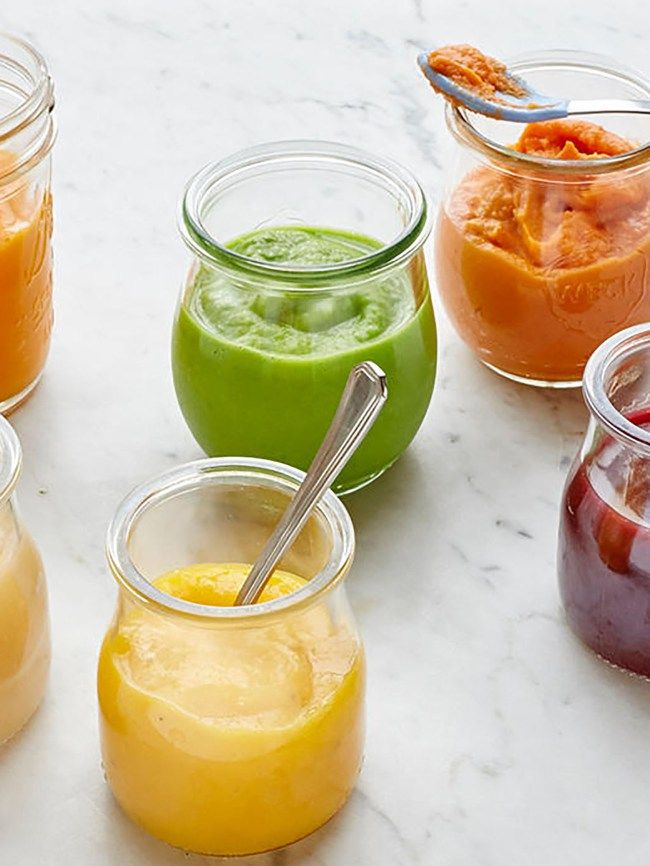
Pears can be steamed until the baby is 8 months old to make the fruit easier to digest and to get the baby used to the new food. After 8 months, peeled, raw pears can be offered and cut into small pieces as finger food if the child is ready to eat it. If the child does not like ordinary pear puree, it can be mixed with cereals or combined with other fruits such as apple, bananas, peaches, etc. With a peel, the fruit is best offered closer to the baby's year of life.
Pear puree should be introduced gradually into the baby's diet, starting with ½ tsp. up to 70 grams, if the child is 7 months old, 80 grams for 8 months, in more detail we look at the table of the volume of food consumed by months. Although there is an opinion among mothers that it is better to give pear puree up to a year in an amount of no more than 40-50 grams - the daily norm, it is up to parents to decide, we look at the well-being of the baby.
You can give pear puree 2-3 times a week, we look at the child's well-being, and his stool, if everything is fine, then alternate the pear with an apple and other fruits.
After 12 months, the baby can be offered no more than 1-2 pears (no more than 200 grams) per day.
pears complementary food
Allergy to pears
Practicing pediatricians are delighted with pears, as they have a low potential for an allergic reaction on the part of the baby. Since pears are more digestible than other fruits and seem to have a reduced allergic response, it's easy to see why they are a great choice for a 7 month old baby as a first or second fruit. However, we still monitor the baby’s reaction to a new product, observe the standby mode when introducing a pear into the baby’s complementary foods.
If a child is prone to allergies, then the pear should be given only in a baked form, since heat treatment removes the allergenicity of the product.
How to choose and store pears for baby food
Today, pears are available all year round, which is certainly good, but not suitable for complementary foods. Since the baby is best introduced to local varieties of pears, in their season, which starts from the end of July and ends in November. It is better not to give overseas varieties of pears to a baby until 5 years old.
It is better not to give overseas varieties of pears to a baby until 5 years old.
When shopping for pears at the market or grocery store, look for pears that are slightly ripe but not too soft. It is unripe pears that will lie down a little, since this fruit always deteriorates quickly.
The fruit must have a smooth skin that is free from dents, dark spots, rot, mold and punctures.
Some pears are multicolored and have brown mottled spots, which may indicate that the pear has a more intense taste. Since pears are a very perishable product, they are sold solid in stores. To speed up the ripening process, place the pears in a paper bag and keep them at room temperature.
Do not store pears near strong-smelling foods, as the fruit tends to absorb other people's odors.
Pears are best stored at room temperature so they can last a couple of days. If the pears are wrapped in a paper bag and put in the refrigerator, then you can keep the fruit for 4-7 days, depending on the variety.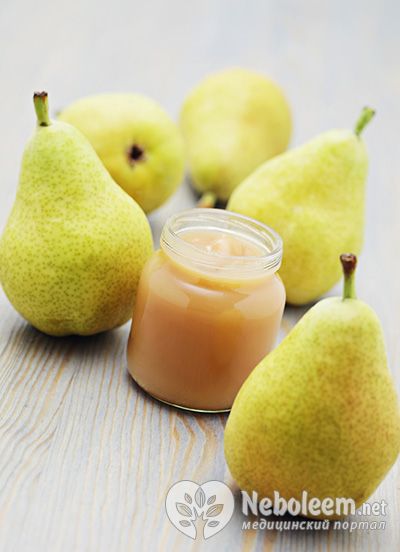
Pears can still be stored frozen and as dried fruits.
Freezing pears
Pear purée may change color when pureed, taste may also change, freezes well, may be gritty/liquid when thawed. It is best to mix pear puree with other fruits. You can also freeze the slices and then grate them before cooking. Pear puree can be stored for about 3 months, and frozen pear slices can be stored in the freezer for up to 6 months.
Dried fruits from pears
Excellent dried fruits can be made from pears, which are suitable for children's compotes. And you can also eat such dried fruits just like that, they are sweet, tasty, suitable as a snack for tea. True, not every child will taste this delicacy, and it is best to offer it to a child older than 2 years of age, since you can choke on dried fruit.
Dried fruits are easy to prepare in the fruit dryer or in the oven.
Canned pears
Pear puree can be preserved, but baby puree is not very tasty.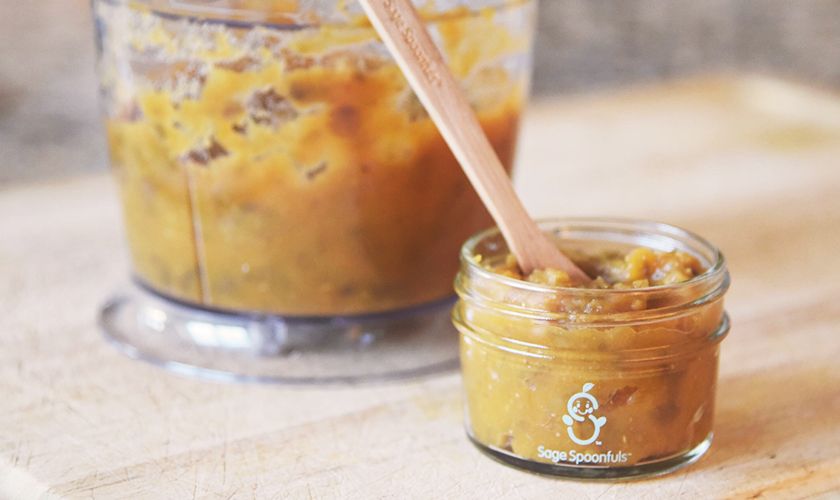 As I already wrote in the article about preservation, pears must be 100% sweet, otherwise the puree will not be tasty. Moreover, pear puree does not stand well in the refrigerator, after a month almost all the jars fermented and exploded. Therefore, I think that conservation of pear puree is not worth such work, in winter it is easier to get frozen pear slices and prepare fresh puree, albeit from frozen pears. Or to make it even easier, go and buy a jar of baby food.
As I already wrote in the article about preservation, pears must be 100% sweet, otherwise the puree will not be tasty. Moreover, pear puree does not stand well in the refrigerator, after a month almost all the jars fermented and exploded. Therefore, I think that conservation of pear puree is not worth such work, in winter it is easier to get frozen pear slices and prepare fresh puree, albeit from frozen pears. Or to make it even easier, go and buy a jar of baby food.
Contraindications
Do not use overripe varieties of pears, as acetic, lactic acids, and methyl alcohol begin to form in it, these compounds have a bad effect on the intestines.
It should be borne in mind that pears should be given to babies after a full meal, after 30 minutes, while taking pear puree, you should also not give the baby water to drink. Pears also do not interact well with meat, dairy products.
How to cook a pear
There are several easy ways to make pear puree.
- Steamer .
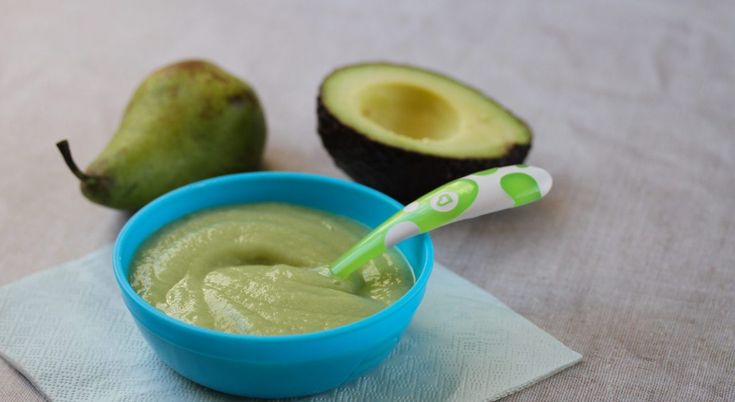 Peel the pear, remove the core and cut into pieces. Place the cooked pear in a double boiler and cook until tender.
Peel the pear, remove the core and cut into pieces. Place the cooked pear in a double boiler and cook until tender. - Cooker . Peel the pear, chop, then place in a saucepan with enough water to cover the pieces. Cook until tender over low heat.
- Baking . Peel and remove the core, cut into quarters and wrap in foil. Bake until done.
- Microwave. Peel and core the pear, then cut into slices. Place in a microwave dish and add some water. Cook at high temperature until the pear is soft (time will vary depending on microwave power).
Prepare the pear in one of the above ways, then put the fruit in a blender, blend until smooth, adding additional liquid as needed. You can use a sieve to achieve a puree mass.
Suggested method of consuming pears in baby food
Fresh pears are delicious and can be offered to a baby after 12 months. As a finger food, you can give this fruit from 8 months of age.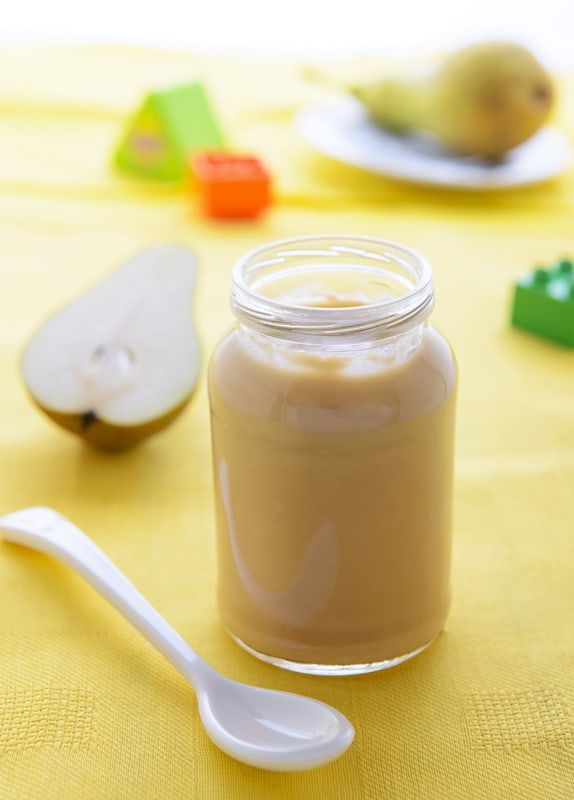 Since pears are prone to oxidation and quickly change their color to brown, to preserve their color and taste, you can sprinkle them with lemon juice (lemon should be introduced into the baby's complementary foods). Pears are also perfect for baby purees and can be added to baked goods like muffins or bread. The combination of porridge with pears, zucchini and pear, yogurt and pear, cottage cheese and pear are also excellent.
Since pears are prone to oxidation and quickly change their color to brown, to preserve their color and taste, you can sprinkle them with lemon juice (lemon should be introduced into the baby's complementary foods). Pears are also perfect for baby purees and can be added to baked goods like muffins or bread. The combination of porridge with pears, zucchini and pear, yogurt and pear, cottage cheese and pear are also excellent.
Pear compote and juice
Pear juice is best given after the child reaches 12 months of age, with a good reaction to pear puree. But with pear compote, the baby can be introduced a little earlier, for example, closer to 8 months, but again with a positive introduction of pear puree into complementary foods. The daily norm of pear compote is about 100 ml, which can be divided into several doses and offered to the baby.
Foods that go well with pears:
1 Comment
Levchuk Victoria©
Not only are pears a very tasty fruit, but they also contain fiber, vitamin C and potassium.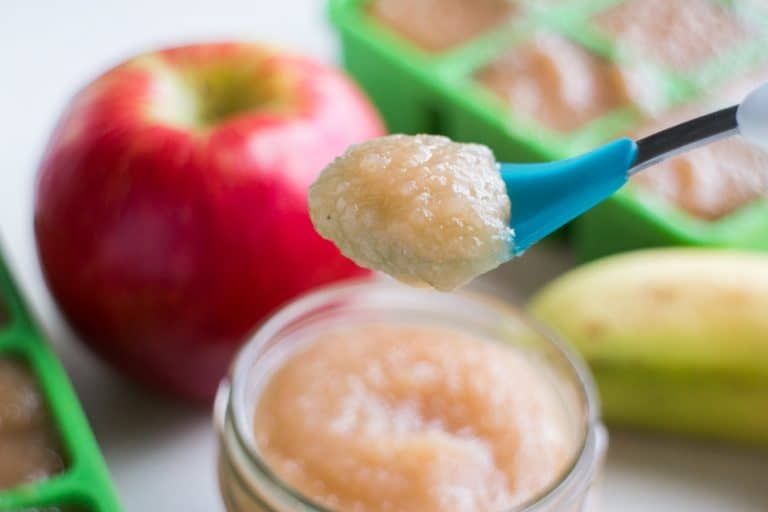 These nutrients have a positive effect on the heart, immunity and digestion!
These nutrients have a positive effect on the heart, immunity and digestion!
Most parents recommend pears as a first food because they easily affect the digestive tract. The peel of a pear contains three to four times more antioxidants than the flesh and protect the body from cancer! The pear is classified as a slightly allergenic product, but we still monitor the reaction. Usually, when introducing complementary foods, a pear is the second green fruit after an apple.
Baby pear puree recipe suitable for baby 6-7 months old. Introduced complementary foods: green pears.
puree from pears
| 4 | Print recipe |
| Portions | Prep time |
Ingredients
- 2 Ripe pears
Portions: Portion
Instructions
-
Clean and cut into pieces, remove seeds.


